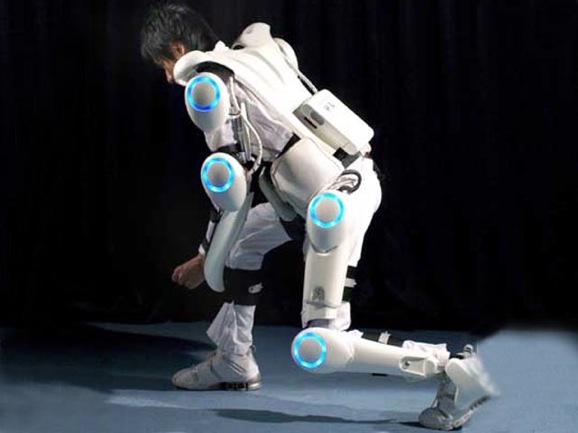The Japanese Invented A Robot Suit, Named It HAL
Seemingly in preparation for the release of director Guillermo del Toro’s Pacific Rim, the world has decided it’s about damn time human’s had real-life wearable robot suits. And late last month we got one step closer to making this a reality. A Japanese robot suit was awarded a global safety certificate.

The certificate makes mass production of these suits a very real possibility, one that could come down in the relatively near future. There are two little bits of information that may dampen the enthusiasm of science fiction fans, however.
First, the metal and plastic exoskeleton is called the Hybrid Assistive Limb, also known as HAL. Really? You designed this wonderful device to help the elderly and the disabled, and then you named it after the murderous artificial intelligence from Stanley Kubrick’s 2001: A Space Odyssey? That could be coincidence, though one that brings to mind a sinister piece of genre history. Except…
The company that invented HAL is called Cyberdyne. If that sounds familiar, it’s because Cyberdyne Systems is the company responsible for creating Skynet in The Terminator movies. You remember Skynet, right? The global defense system responsible for pushing the human race into an all-out battle for survival against the machines?
The article actually goes so far as to point out that “the company is unrelated to the firm of the same name responsible for the cyborg assassin played by Arnold Schwarzenegger in the 1984 film The Terminator.” You don’t run across many news stories that feel the need to remind you that we don’t live in a James Cameron movie.
Neither of these facts necessarily make me want to bestow a “safety certificate” on anything.
Now that the paranoid sci-fi stuff is out of the way, HAL is actually in impressive bit of technology. The battery-powered suit picks up on the wearer’s muscle impulses to predict movements and provide support. HAL is the first such device to receive this kind of certification.
HAL can also be used to aid in jobs that require regular heavy lifting. Workers cleaning up the Fukushima nuclear plant employed an earlier version to help support the heavy equipment they wore for protection against radiation. Robotic suits have also started showing up in hospitals and retirement homes, where workers need to be able to pick up and securely hold patients.












